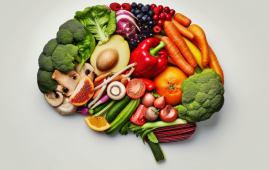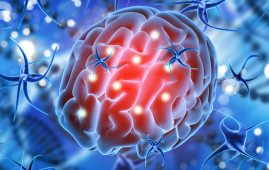

Researchers examined the structural and functional properties, traditional and modern applications, modes of action, toxicity, and current production strategies of rare ginsenosides (RGs) in a recent review published in the Journal of Advanced Research. RGs are the secondary metabolic derivatives of major ginsenosides, which are beneficial chemicals derived from Panax ginseng.
This analysis summarizes over 350 articles on these substances and finds that 144 RGs have been found with clinical uses such as immunoregulatory, anti-aging, anti-cancer, cerebrovascular, and cardiovascular. This study delves deeper into the breakthroughs in large-scale RG manufacturing and may serve as the foundation for future research into the applications of these extraordinary chemicals.
Novel knowledge for an ancient medicine
The root of plants in the genus Panax is known as gingseng. It has been utilized for thousands of years in traditional Chinese and Korean medicine and cuisine to cure chronic diseases ranging from erectile dysfunction to memory loss. However, due to inconsistencies in recent clinical studies, the use of ginseng and its extracts remains controversial, and the plant has yet to be approved as a prescription medicine by the United States (US) Food and medicine Administration (FDA).
Ginsenosides are a type of dammarane-type triterpenoids that can be derived from any of the three ginseng species – Panax ginseng, P. notoginseng, or P. quinquefolius – and account for the majority of therapeutically and pharmacologically helpful metabolites of these herbs. Ginsenosides are classified based on their relative abundance into the substantially more abundant primary (macro) saponins and the rare ginsenosides (RGs), which are naturally found in concentrations less than 0.1% by volume. Steaming, microbial transformation, and acid/alkali treatment are all used in the industrial production of RGs from primary saponins.
Until recently, most study on the therapeutically relevant effects of ginseng and its compounds concentrated on primary saponins, owing to RGs’ apparent limited in vivo bioavailability. Recent study, however, has called this concept into question, revealing that the disparities between the putative pharmacological effects of RGs and their poor in vivo performance are attributable to gut microbiome-mediated digestion. This triggered a torrent of research on RG’s potential medical benefits, most notably in the treatment of malignancies, cerebrovascular illnesses, and cardiovascular ailments.
While research on RGs is expanding rapidly, a review evaluating the overall impact of these chemicals is still absent. The current review tries to fill this void by synthesizing information on RG research stored in the Web of Science core collection between 2001 and 2021.
Classification of ginsenosides and their production
Recent bioprospecting advancements have identified over 500 saponins from the Panax genus, the majority of which are main saponins. While naturally occurring RGs are scarce, developments in natural product chemistry have led to the discovery of 144 RGs produced from parent saponins through transformations such as steaming, bio-, and chemical transformations. Encouragingly, these techniques use ginseng stems and leaves as raw materials, which is cost-effective given that ginseng roots have historically been the most expensive herb component.
Rk1, Rg5, Rg6, F4, 20(R/S)-Rs3, Rh4, Rs5, 20(R/S)-Rg3, Rk3, and Rs4 were identified using high temperature steaming. However, because the yield and quality of the generated RGs are temperature and time dependent, acid/alkali chemical transformation is the most dependable method for batch RG manufacture.
“Strong acid hydrolysis shows a higher conversion efficiency, leading to not only deglycocylation of ginsenosides, but also the side chain derivatization such as dehydration, cyclization, and double bond displacement, especially configuration inversion at C-20 of aglycones. In contrast, alkali hydrolysis has the advantages of high conversion, mild reaction conditions which cause no epimerization and no cyclization of the side chain.”
more recommended stories
 Fentanyl Inhalation: Brain Damage Risks
Fentanyl Inhalation: Brain Damage RisksAfter treating a middle-aged man who.
 Neurocardiac Connectivity in Depression Treatment
Neurocardiac Connectivity in Depression TreatmentHeart rate deceleration and sadness may.
 Antioxidants: Impact on Quality of Life in Acne Vulgaris
Antioxidants: Impact on Quality of Life in Acne VulgarisA recent study published in the.
 Brain Age Estimation: EEG Advancements in Neurology
Brain Age Estimation: EEG Advancements in NeurologyTo estimate brain age using EEG.
 Balanced Diet Linked to Enhanced Brain Health
Balanced Diet Linked to Enhanced Brain HealthDiet and brain health are strongly.
 Neurodegeneration Linked to Fibrin in Brain Injury
Neurodegeneration Linked to Fibrin in Brain InjuryThe health results for the approximately.
 DELiVR: Advancing Brain Cell Mapping with AI and VR
DELiVR: Advancing Brain Cell Mapping with AI and VRDELiVR is a novel AI-based method.
 Retinal Neurodegeneration in Parkinson’s Disease
Retinal Neurodegeneration in Parkinson’s DiseaseBy measuring the thickness of the.
 Epilepsy Seizures: Role of Astrocytes in Neural Hyperactivity
Epilepsy Seizures: Role of Astrocytes in Neural HyperactivityRoughly 1% of people experience epilepsy.
 Epilepsy Surgery: Rare Hemorrhagic Complications Study
Epilepsy Surgery: Rare Hemorrhagic Complications StudyFollowing cranial Epilepsy Surgery, hemorrhagic complications.

Leave a Comment